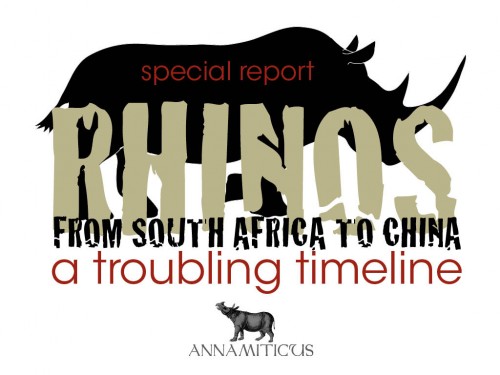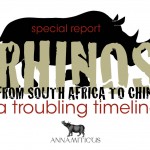
It seems there is a somewhat odd development in the story of live rhinos exported from South Africa to China for a “pharmaceutical breeding” enterprise, which we have been following since July 2010: There are now claims that these white rhinos will be “released” into a tropical Chinese rainforest.
A representative of the “Mekong Group” (the company apparently behind the “release” plan) told AFP that it’s all in the name of “scientific research”. However, Zhang Li, professor of ecology at Beijing Normal University, disagrees.
This is a commercially-operated rhino husbandry project rather than an academic endeavour.
Dr. Tom Milliken, rhino horn trade expert with the wildlife trade monitoring network TRAFFIC said the scheme is “not conservation” and that environment is completely unsuitable for white rhinos.
These animals will just not survive in a rainforest-type environment. We have concerns about nutrition and their overall ability to cope. If they don’t have supplementary food, they could starve. This is simply not conservation.
China is notorious for circumventing CITES for its own commercial purposes. For example, China has been touting its “tiger farms” as conservation, while it is well known that these operations are simply a conduit for China’s massive illegal trade in tiger parts. Despite claims that these commercially-bred tigers would be released into the wild in the name of conservation, this has never happened.
And it is likely that the “release” of these rhinos is yet another scheme to mask the “breeding of endangered species for medicinal use” agenda that China’s own pro-trade lobby is so fond of pushing.
For the full backstory on China’s rhino horn scheme, download our special report Rhinos from South Africa to China: A Troubling Timeline, which we distributed in March 2013 at CITES CoP16 in Bangkok.




